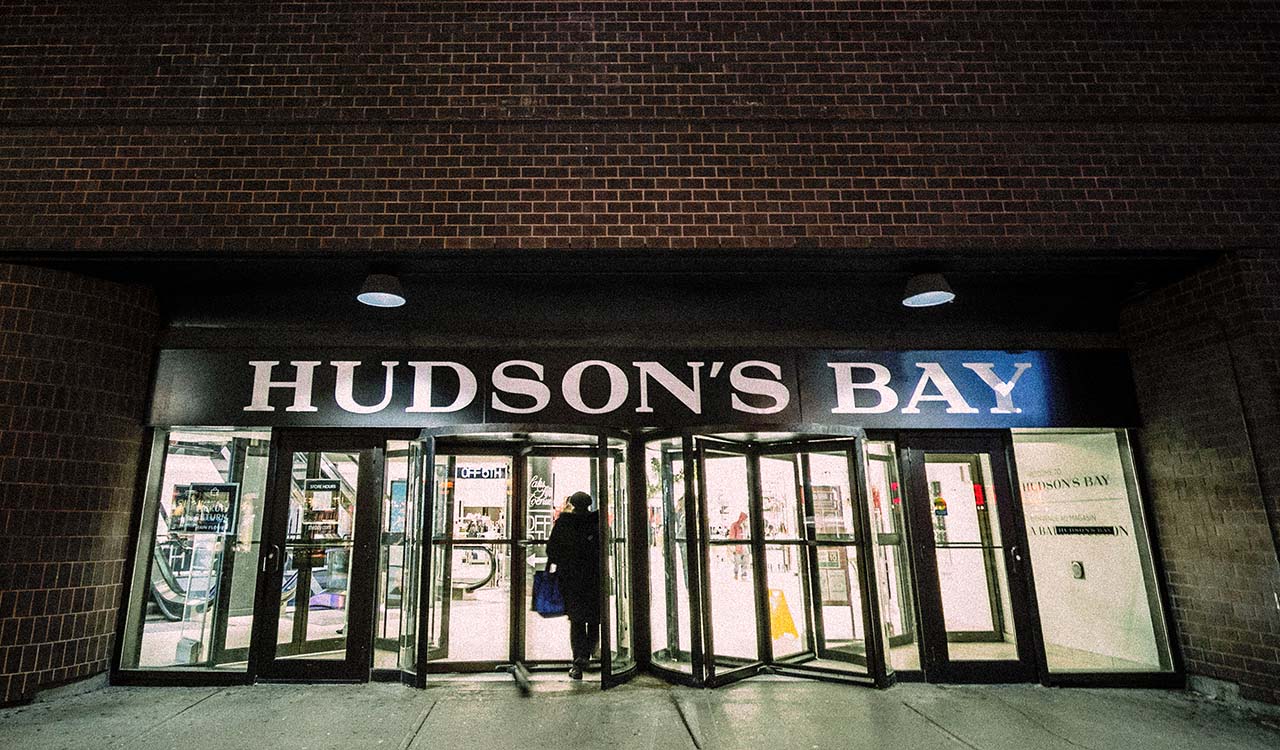Question: What do Eddie Lampert and Richard Baker have in common? Answer: They have, are currently, or soon will be destroying everything they have had control over. Lampert singlehandedly killed nearly $50 billion in retail volume at Sears Roebuck, Kmart and Sears Canada. Now here comes Richard Baker. As you may have read, Baker has just sent Canada’s oldest corporation, The Hudson Bay Company, into bankruptcy.
Seemingly from out of nowhere, a South Carolina based industrialist acquired HBC. Richard Baker, scion of a U.S. based family real estate business took a minority stake. But the new owner died suddenly, his widow sold her husband’s stake to Baker and voilà real estate Baker became the HBC Governor and an instantly minted retailer.
Baker’s Legacy
Over the years following his improbable purchase of HBC Corp. from the widow of its previous owner, Baker hollowed out and eventually closed all of Hudson Bay Company’s divisions and operating strategies in Canada other than The Bay. In time, he kneecapped Lord & Taylor in the U.S. Then he came up with a completely specious strategy to separate The Bay Stores from thebay.com. This bad idea was eventually reversed but not before investors foolishly bought into the model which they also did when Baker separated Saks from saks.com. And now he has driven a set of coffin nails into The Bay itself. Spoiler alert, he’ll do the same thing to this monster he’s created called Saks Global.
Land Grab
To give Baker a modicum of credit, he did, by his own characterization “steal” Lord & Taylor from Macy’s and then he hoodwinked a hapless Target Corp. into buying HBC’s Zeller’s real estate portfolio. Macy’s had no use for L&T which they acquired with their ill-fated May Company acquisition. Then, Target failed to realize that at least half of the former Zeller’s stores were on the wrong side of the tracks. Baker also appeared to have “stolen” Saks Fifth Avenue from its original shareholders. But then there was a truly ridiculous foray into Europe when Baker entered into a real estate partnership with German department store, Galleria Karstadt Kaufhof, resulting in the opening and then closing of Hudson Bay Stores in the Netherlands. As if the Dutch were in any way interested in patronizing a Canadian store. Baker, however, claimed that he made money on this European deal. If that’s actually true, he probably was the only one. Along the way there was a failed investment in gilt.com, failed store openings of Saks Fifth Avenue in Canada and an overreach in expanding Saks Off Fifth in the U.S. and Canada. Mindlessly throwing darts in the hope of hitting a target somewhere is not a winning strategy.
To add some historical context to the Hudson Bay Company’s fortunes – in the early 2000s Sears Canada came close to buying The Bay. Fortunately, that deal never took place but then Sears Canada did foolishly buy Eaton’s. I converted the seven acquired Eaton’s stores across Canada to Sears about a year after I joined Sears Canada as CEO when it became abundantly clear that we had no viable strategy to operate these stores as a stand-alone banner. We then focused our efforts on taking market share away from our principal competitor in apparel, accessories and soft home, namely The Bay.
Unlikely Partners
During my 3½ years at Sears Canada, HBC made two attempts to convince us to purchase them — once through a friendly outreach and then by way of subversion in an appeal to Sears Canada’s majority shareholder, Sears Roebuck. I was curious during that first effort but was faced with a near mutiny on the part of my senior management team who wanted no part of The Bay. They cited extremely troublesome inconsistencies in performance and productivity. They were right in their assessment of HBC. I then scotched the second effort, an end-around attempt, by telling Sears Roebuck’s CEO that there was no way we would even remotely consider participating in a deal. We were having too much fun standing on The Bay’s throat.
Baker Manifest Destiny
Then, seemingly from out of nowhere, a South Carolina-based industrialist acquired HBC. Richard Baker, a scion of a U.S.-based family real estate business took a minority stake. But the new owner died suddenly, his widow sold his stake to Baker and voila real Baker became the HBC Governor and an instantly minted retailer.
Now, after putting Saks Fifth Avenue on a slow pay/no pay footing with vendors for the better part of a year, Baker consummated his alleged long-standing dream of combining Saks with Neiman Marcus. What to make of this? Taking on billions of dollars of new debt to pull off a merger while you publicly inform your longstanding vendors that they will have to continue to wait to be paid — and if they don’t like it risk being abandoned? Add to this, presiding over a collapse in volume and customer service particularly at Saks and a truly ham-handed exit from Neiman Marcus’ hometown HQ in Dallas Texas. What is it about this picture that doesn’t look attractive?
Questionable Odds
For additional perspective, since the 1970’s virtually every retail merger/acquisition in the U.S. resulted in failure. This was particularly true when two troubled retail enterprises tried to turn their sow’s ears into silk purses. There is no amount of “synergistic” savings that offsets poor strategy and execution. And Saks and Neiman’s have both certainly exhibited less than stellar strategies, execution and overall performance in recent years. Is there some well-thought-out, yet-to-be-revealed, grand view as to how to assort, present and differentiate these two luxury banners? Maybe – we’ll have to wait and see. Is there some compelling, yet-to-be-revealed, strategy to coax major luxury brands to be supportive despite the abuse they have been exposed to rather than continue to invest in their own vertical networks of stores and websites? Maybe – we’ll have to wait and see. All we have seen so far are announcements of reductions in force. But if the past is prologue for the future, Richard Baker’s consistent legacy of “winging it” and then failing surely should be of abiding concern. This is the requiem for The Hudson Bay Company.




